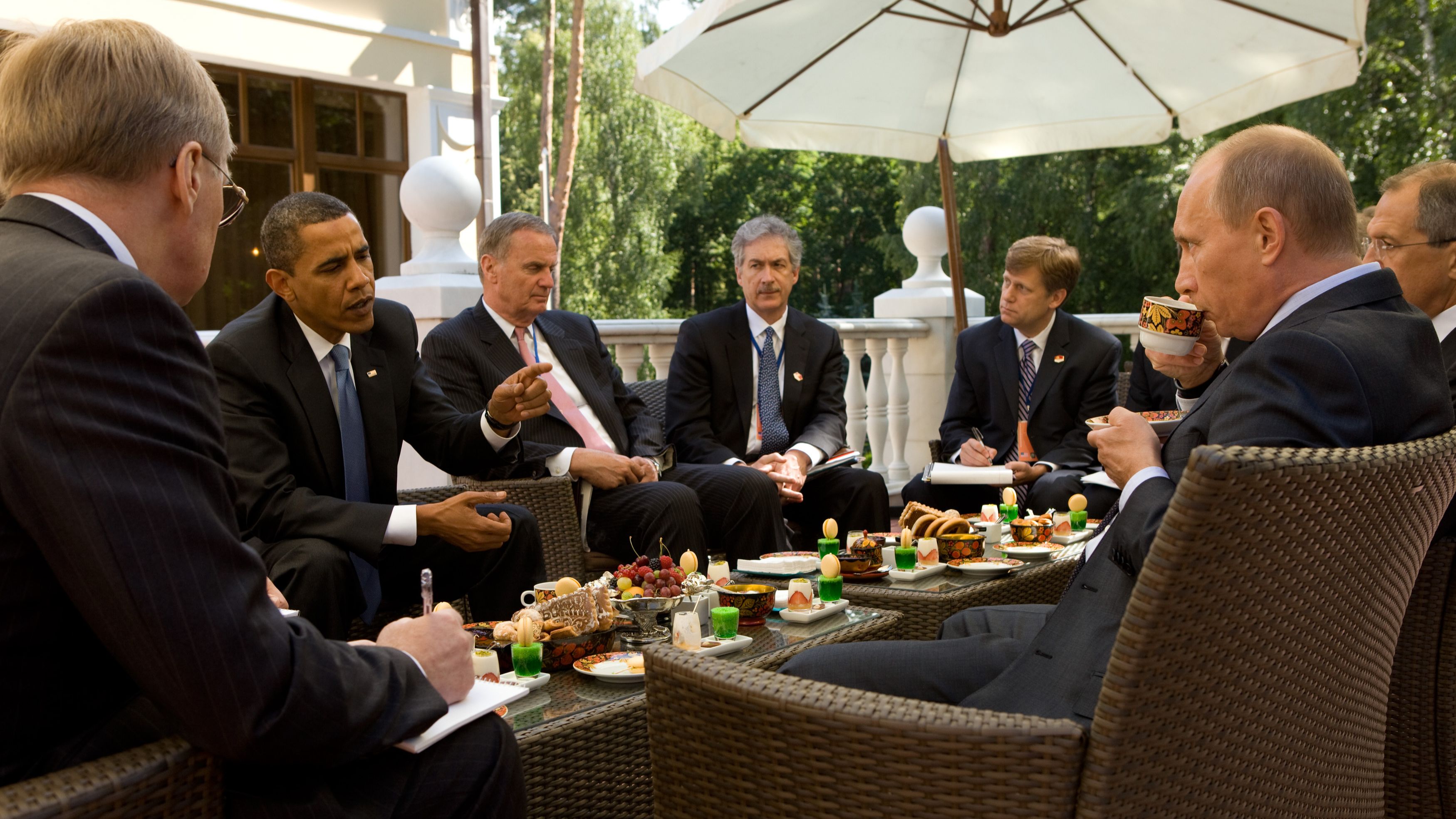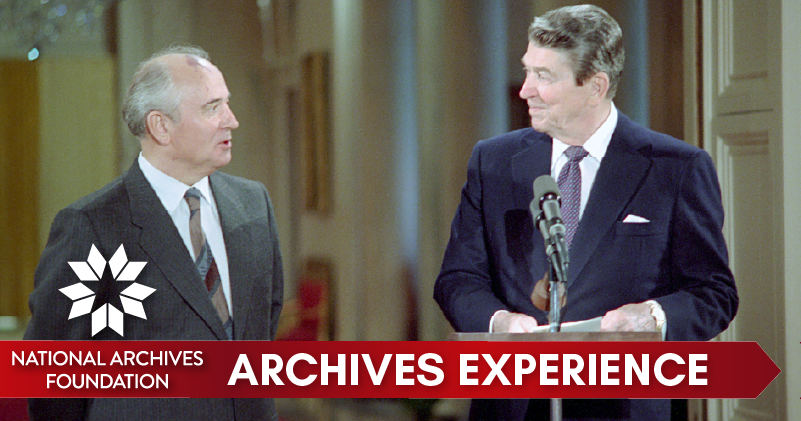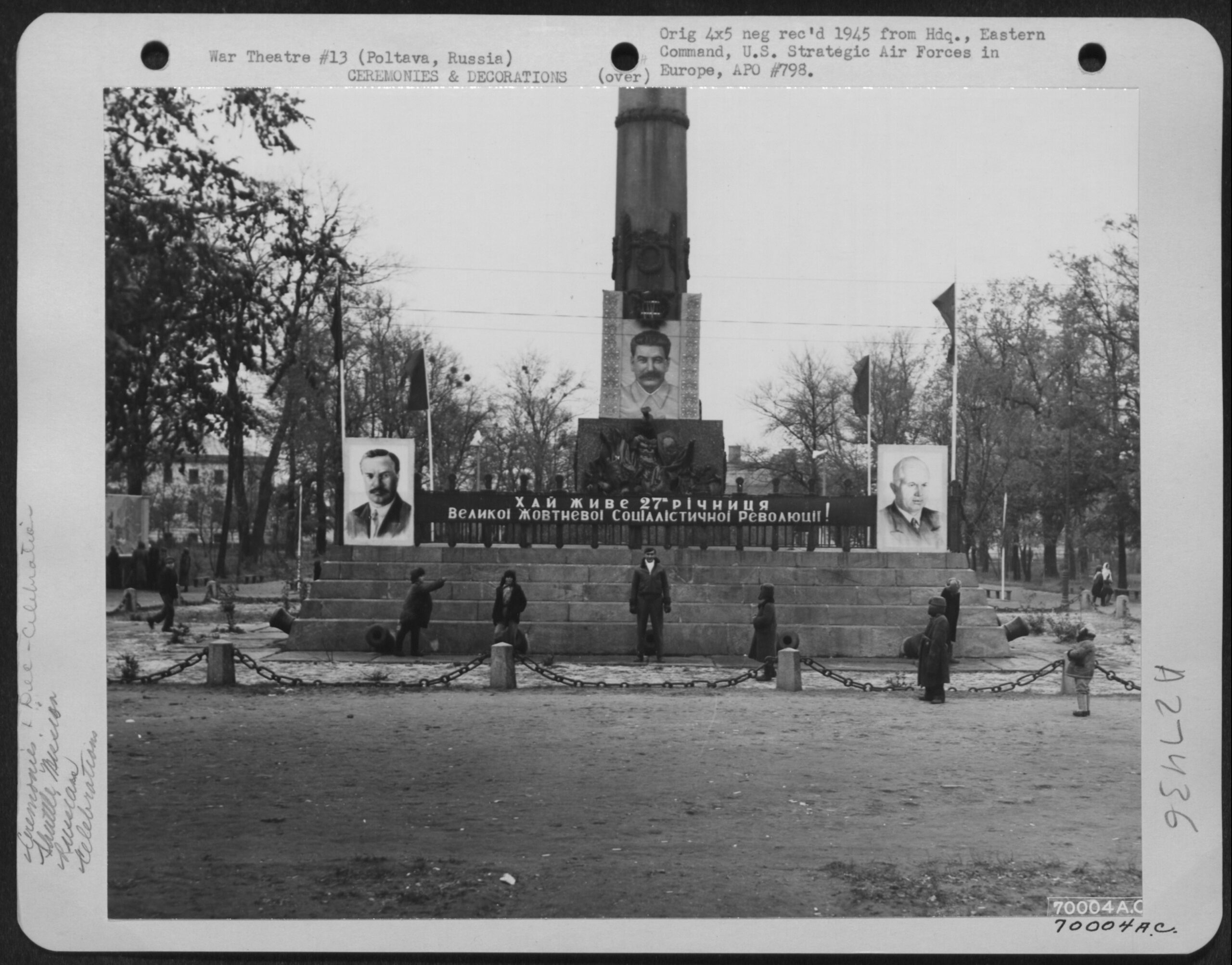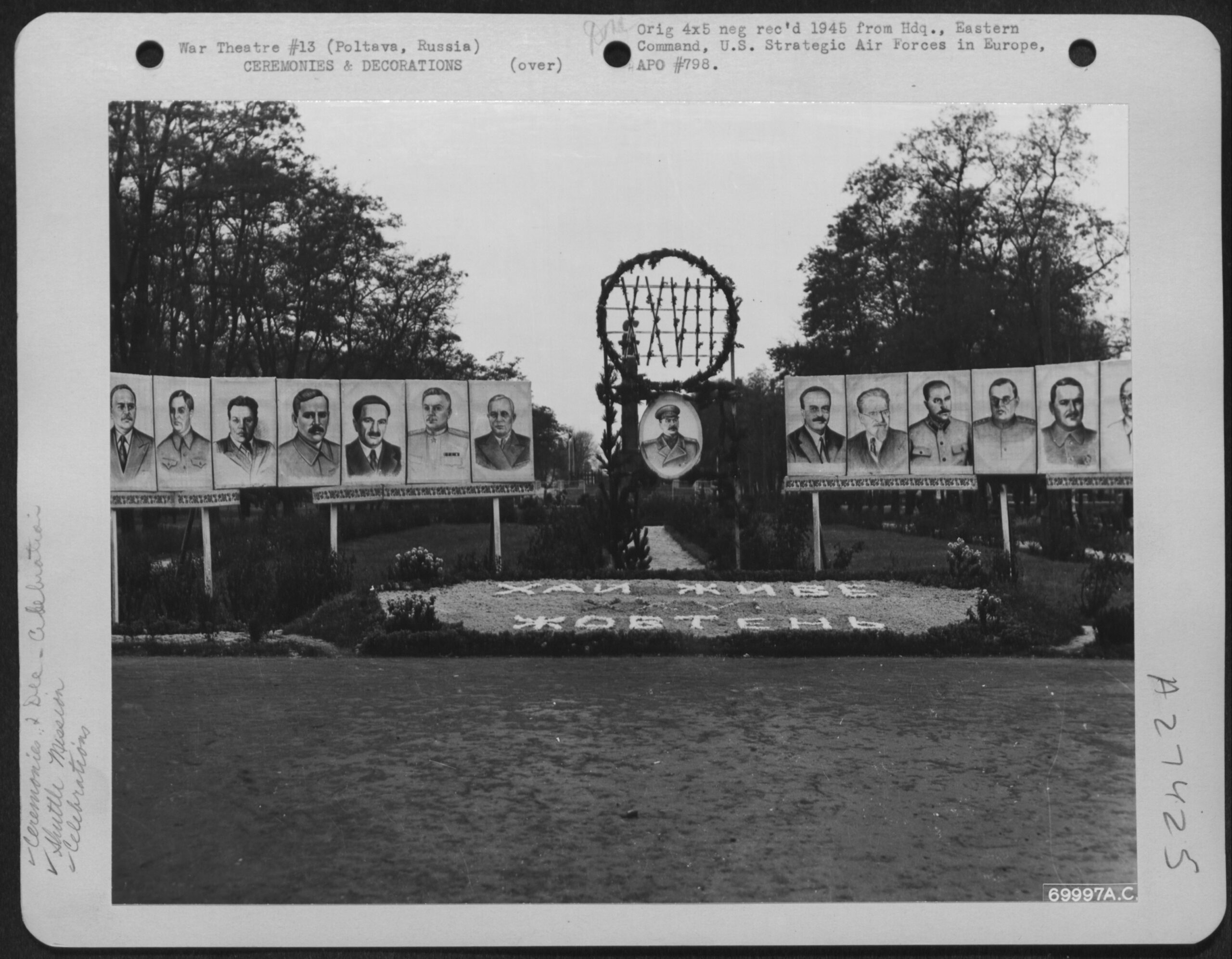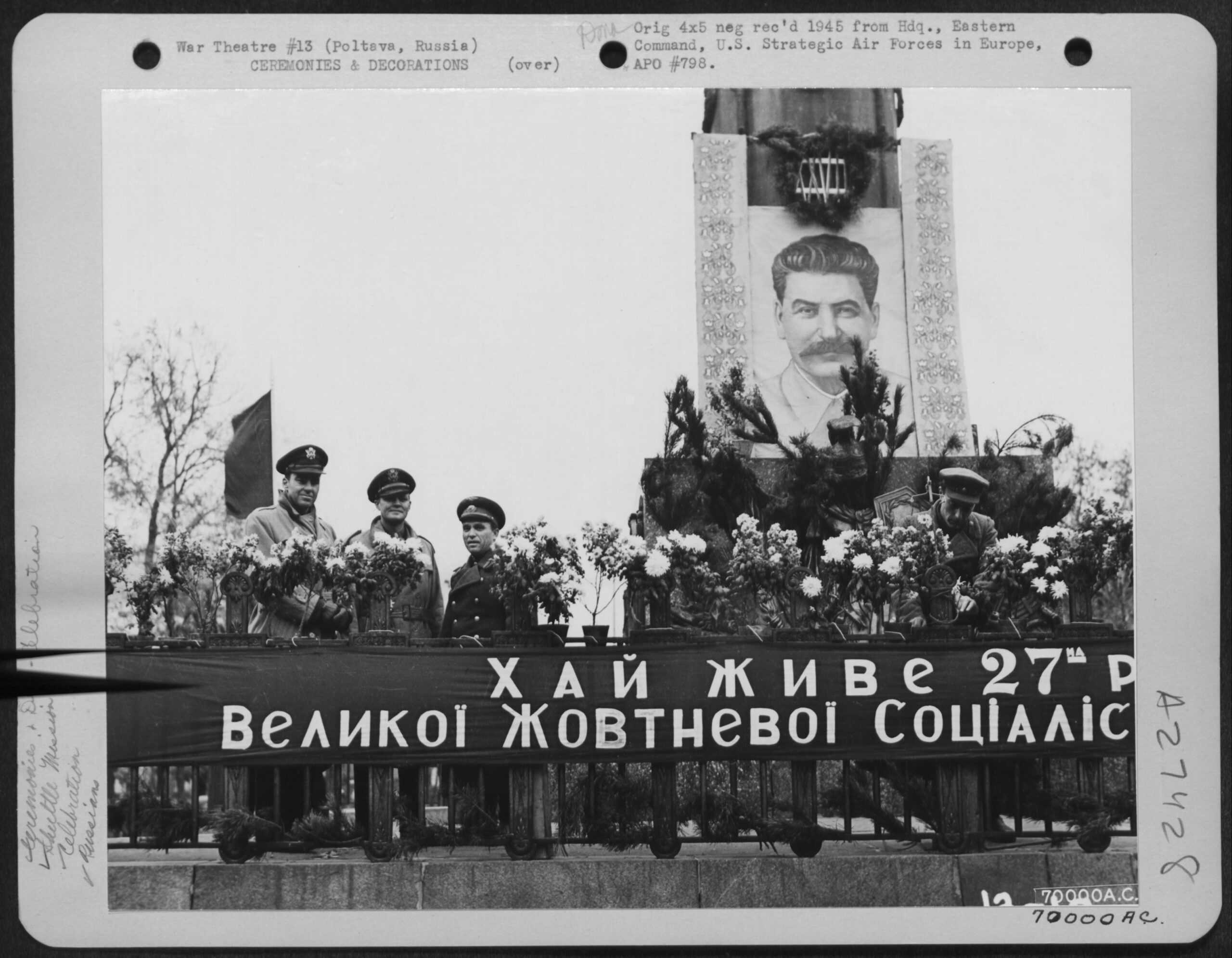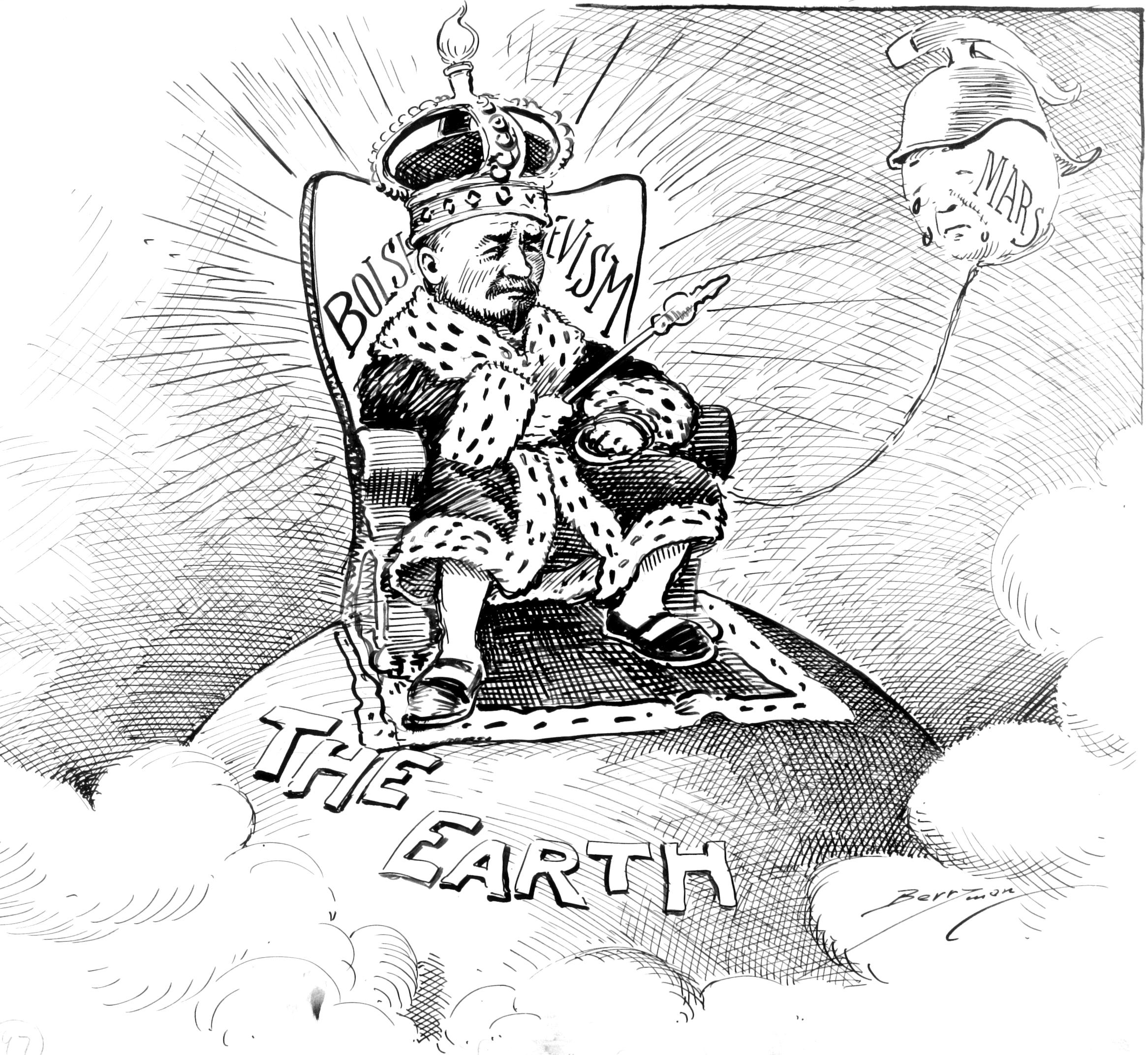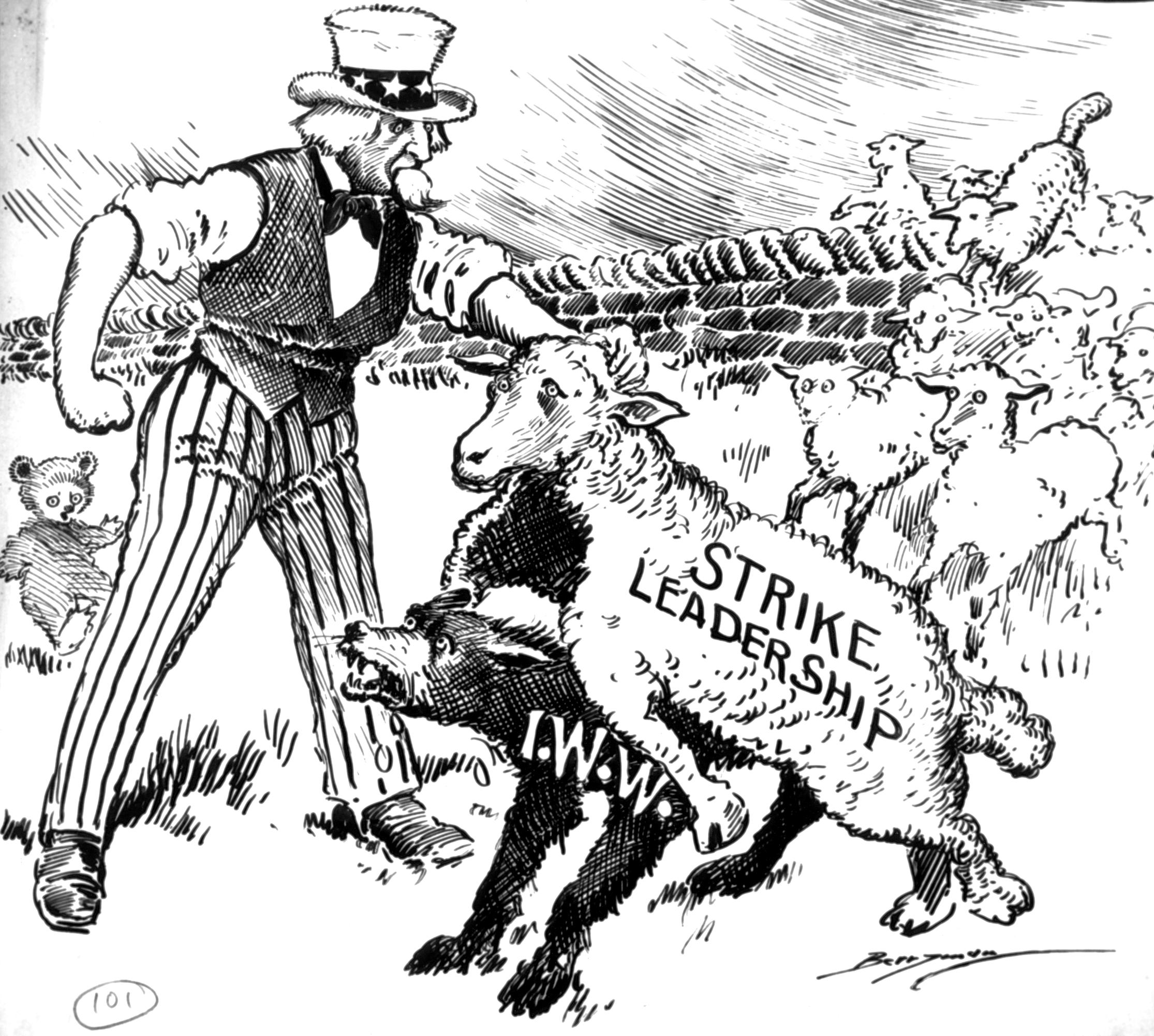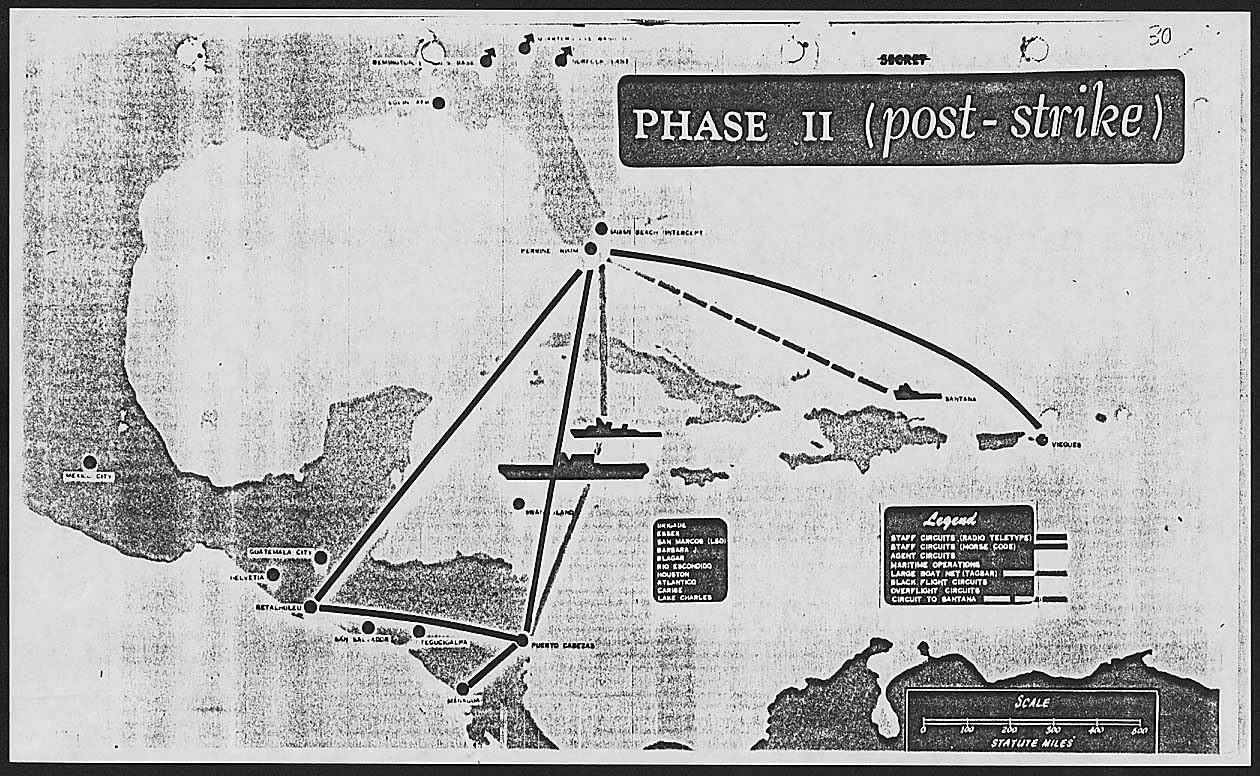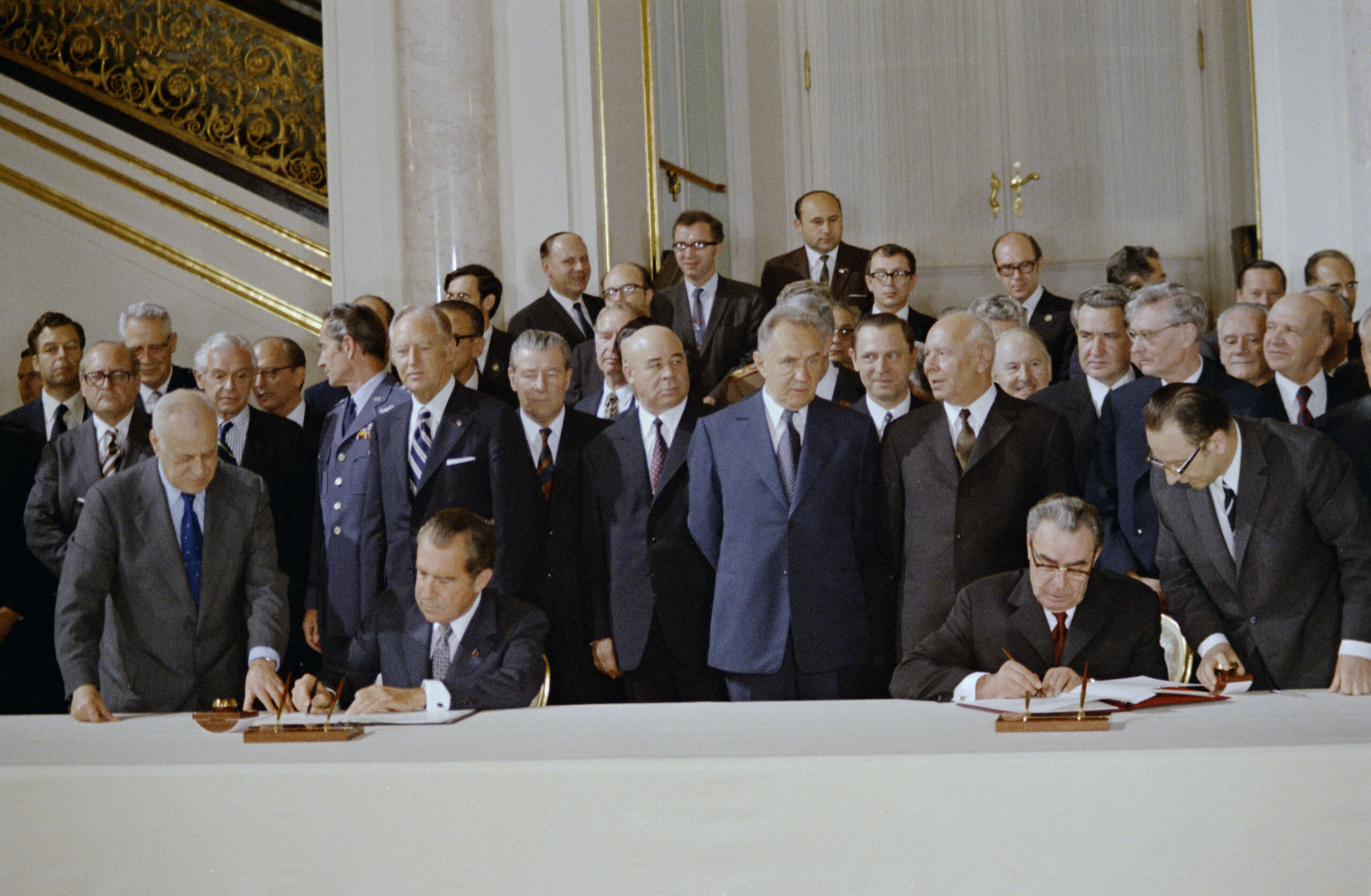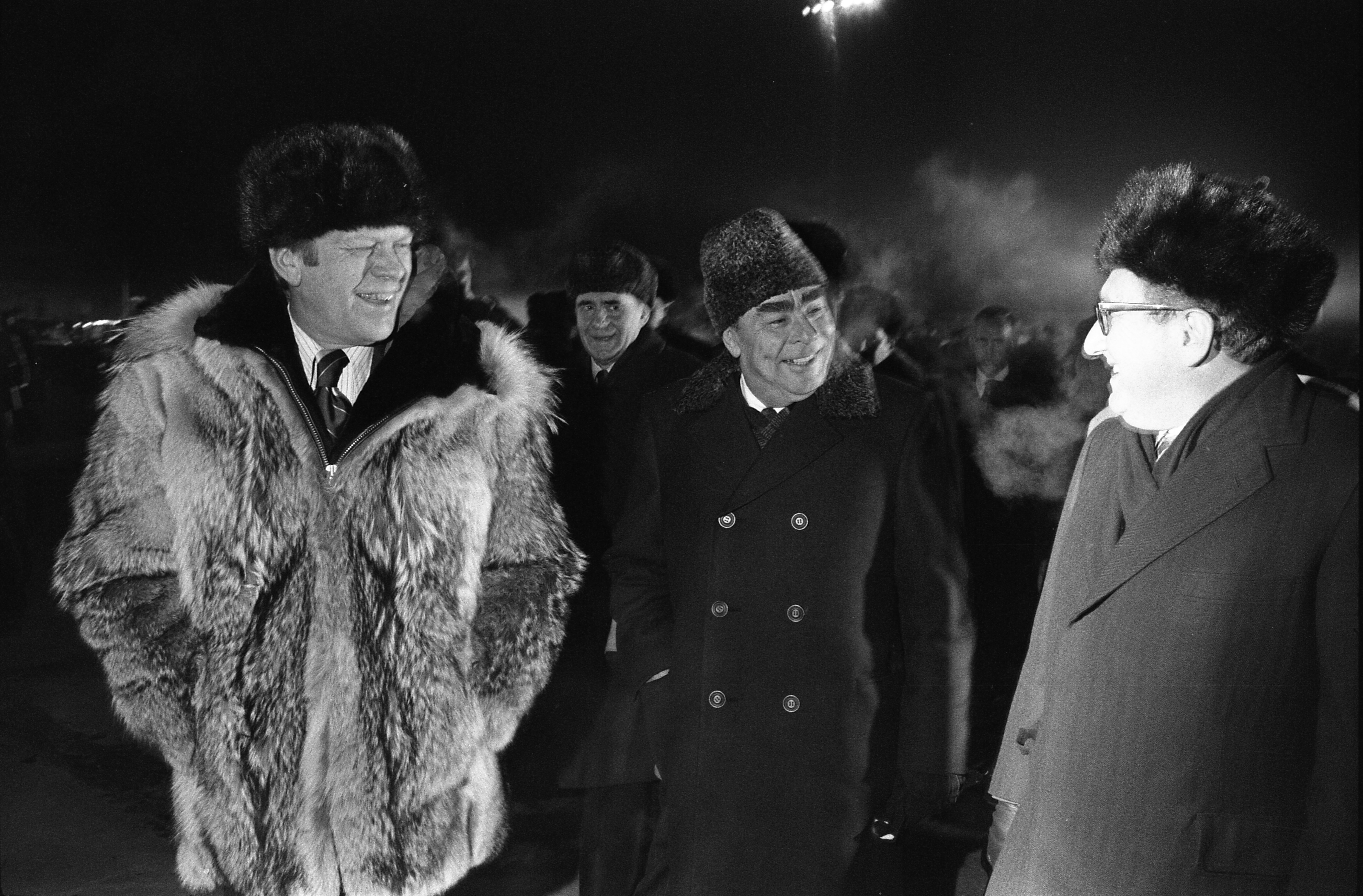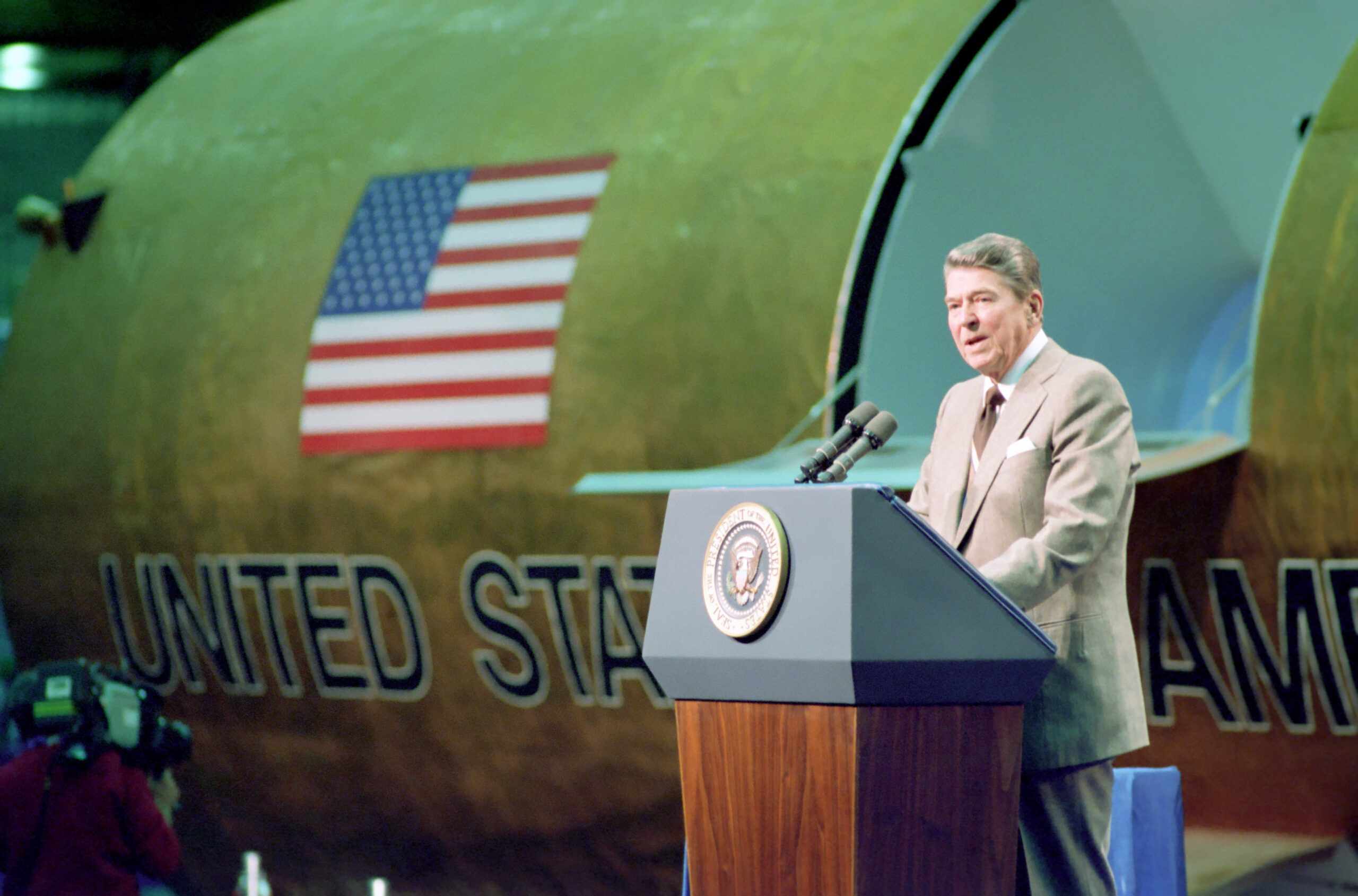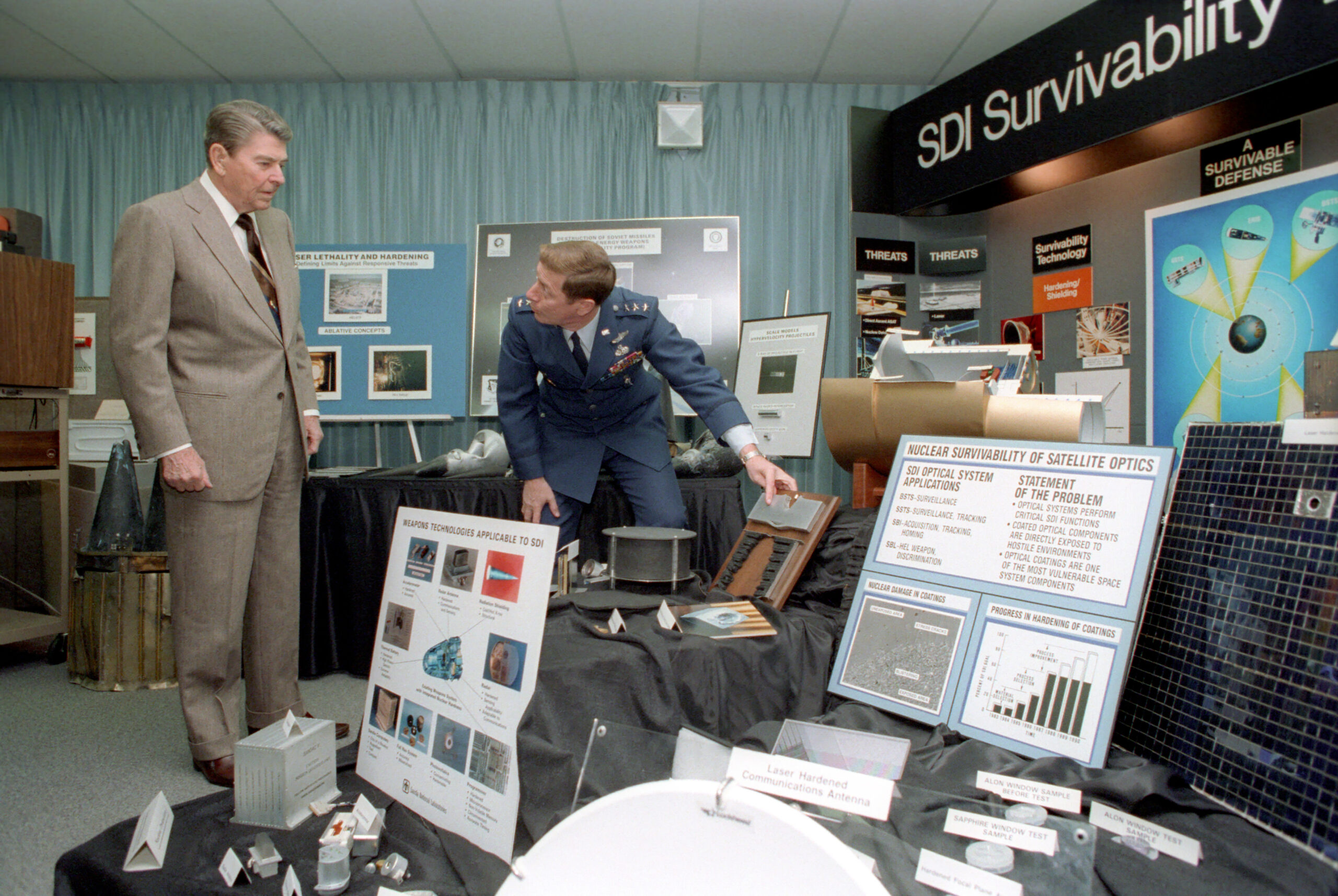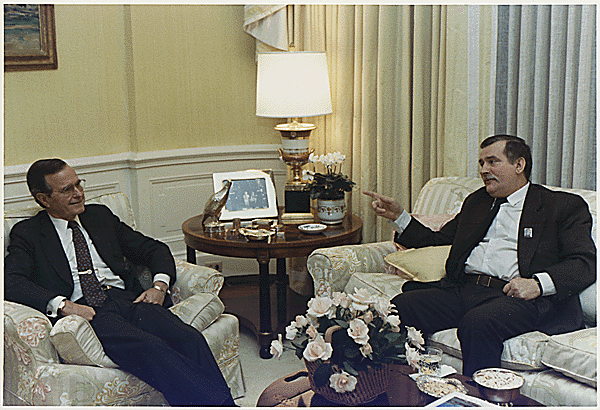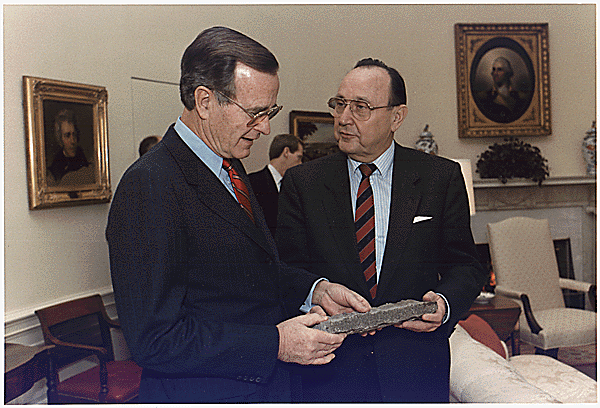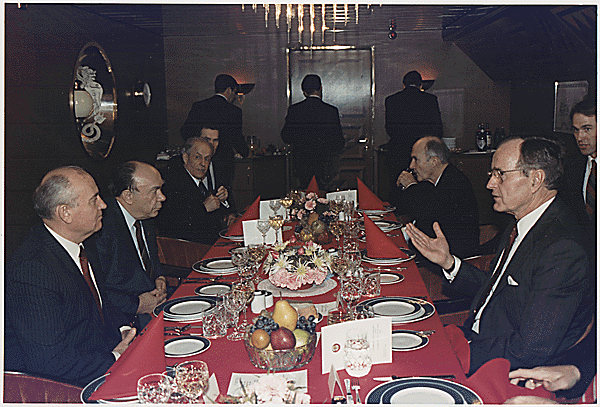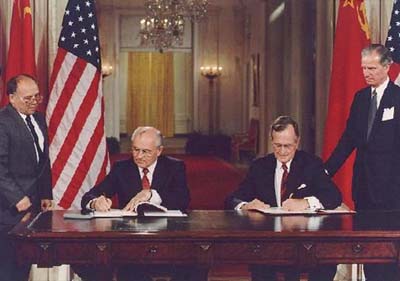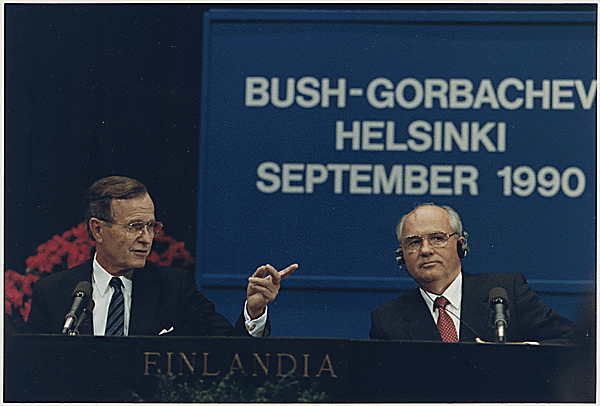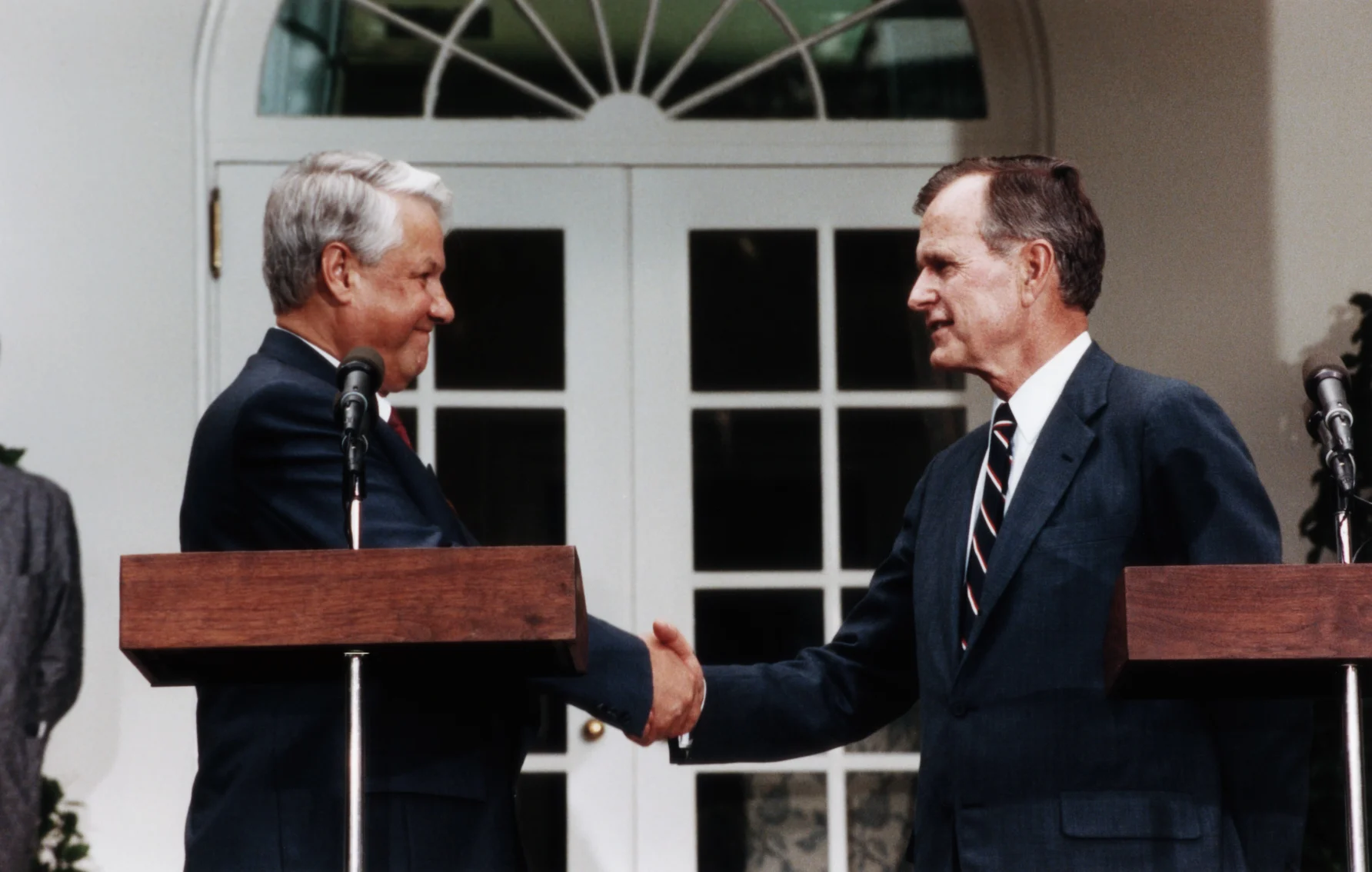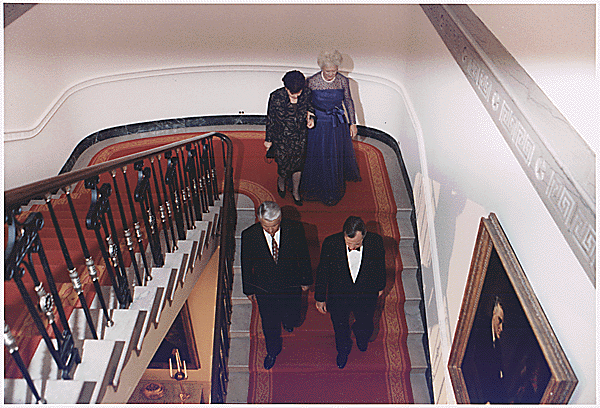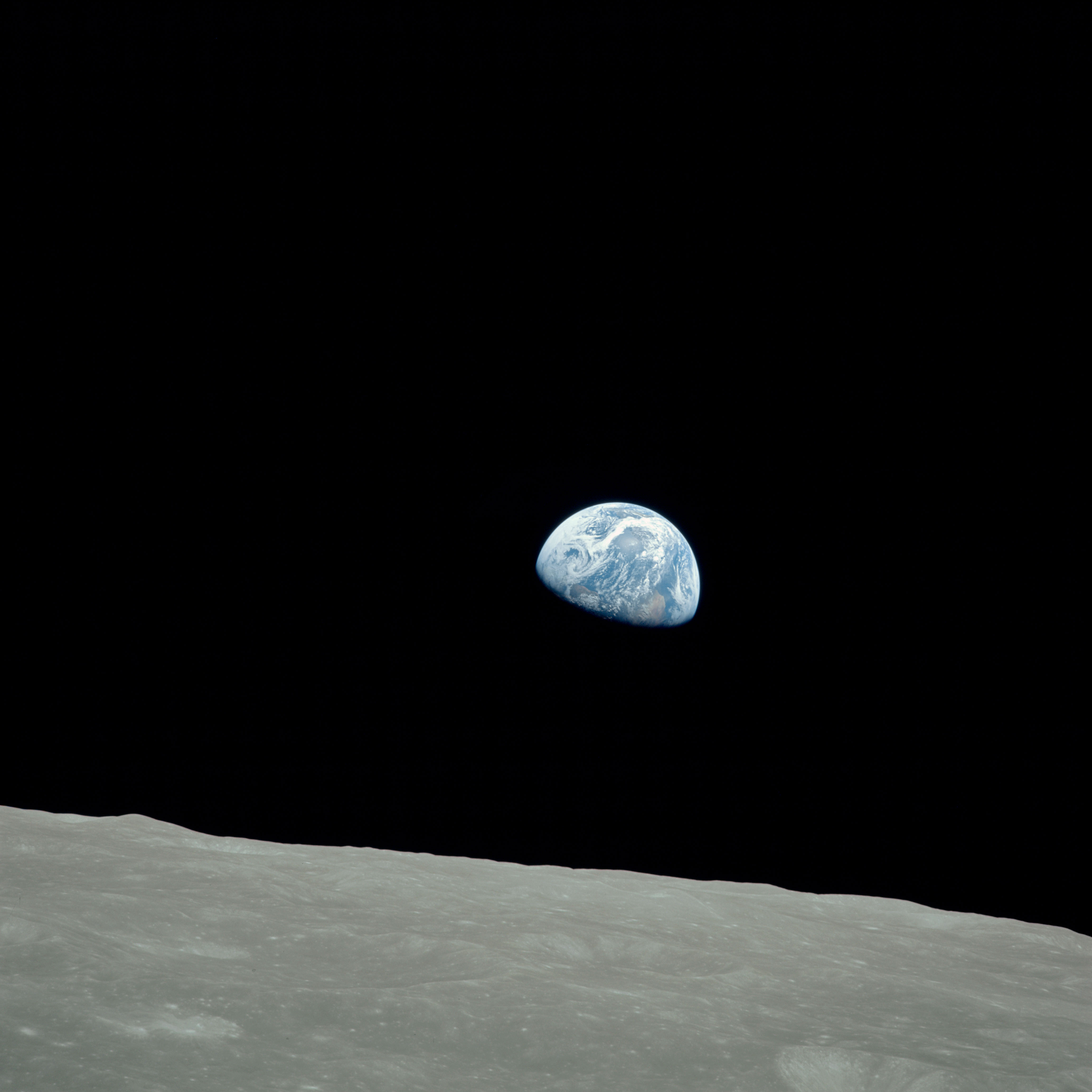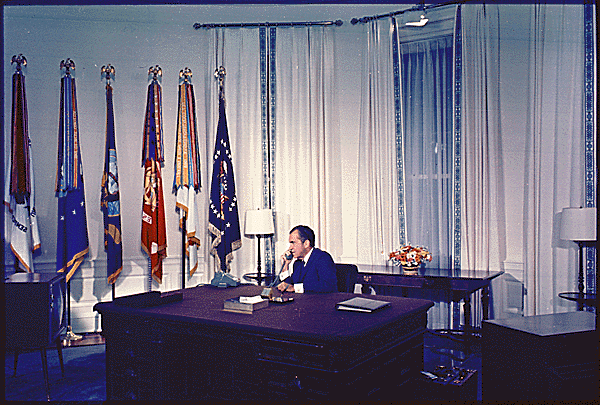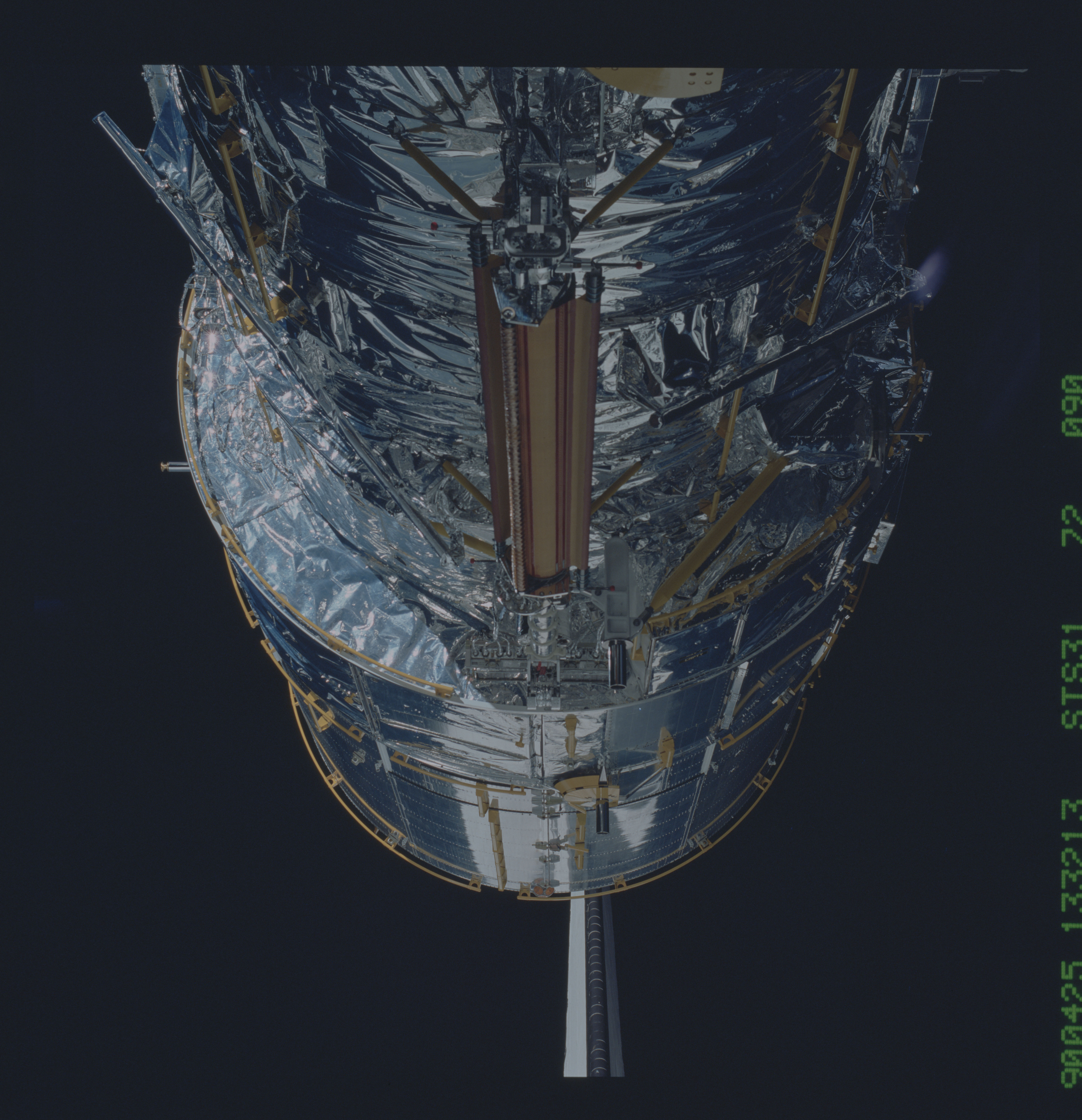Archives Experience Newsletter - December 13, 2022
Polar Opposites
Every action has an equal and opposite reaction. It’s true in physics, and it’s true in history. And for almost a century, this rule applied to two superpowers, acting and reacting to each other in a careful diplomatic and military dance.
One of the most influential events in American history did not take place in America at all. In 1917, a continent away, the Russian Revolution overthrew hundreds of years of tsarist rule to form a new communist state. Just a few years later, on December 30, 1922, a treaty between Russia, Ukraine, Belarus and Transcaucasia (modern-day Azerbaijan, Armenia and Georgia) officially formed the Soviet Union.
To mark the centennial, we’ve pulled Archives records (there are LOTS of them) from some of the most notable moments in history between the United States and the Soviet Union. Do you agree? What moments in U.S.-Soviet history did we leave out? Tell us @archivesfdn.

Patrick Madden
Executive Director
National Archives Foundation
Hanging the Iron Curtain

1948 War Department intelligence report on the Soviet Union
National Archives Identifier: 7788604
The Romanov family of tsars came to power in Russia in 1613. Under their long, autocratic and often cruel rule, the economic disparities between rich and poor were drastic. Serfdom was legal in Russia until the middle of the 19th century, and outlawing it did little to improve the economic plight of most of the population.
The First Russian Revolution in 1905 instituted some constitutional change, including the establishment of the Duma, an elected legislative body, and the Fundamental Laws, which outlined reforms the tsar promised to make. These changes were promising, but Tsar Nicolas II stubbornly resisted moving from an absolute to a constitutional monarchy, ruling by decree when the Duma was not in session and dissolving two of the four Dumas when the reforms they proposed displeased him. When Russia entered World War I, it suffered massive casualties on the battlefield and severe food shortages on the home front, which caused morale to plummet.
The Second Russian Revolution—also called the February Revolution—in 1917 upended the established order for good. The Bolsheviks overthrew Nicolas II and his imperial government and forced the tsar to abdicate. On March 3, 1918, the Soviets ended Russia’s involvement in World War I by signing the Treaty of Brest-Litovsk with the Central Powers—Germany, Austria-Hungary, the Ottoman Empire and Bulgaria. In July 1918, the royal family was executed at their home in exile in Yekaterinburg.
The country was then plunged into a bloody civil war between the Red Army—the Soviet or Communist Army—and the White Army—a motley congregation of political groups united only by their opposition to the Bolsheviks. The fighting lasted until 1922, when Russia, Ukraine, Belarus and Transcaucasia (modern-day Armenia, Azerbaijan and Georgia) signed a treaty that created the Union of Soviet Socialist Republics (USSR).
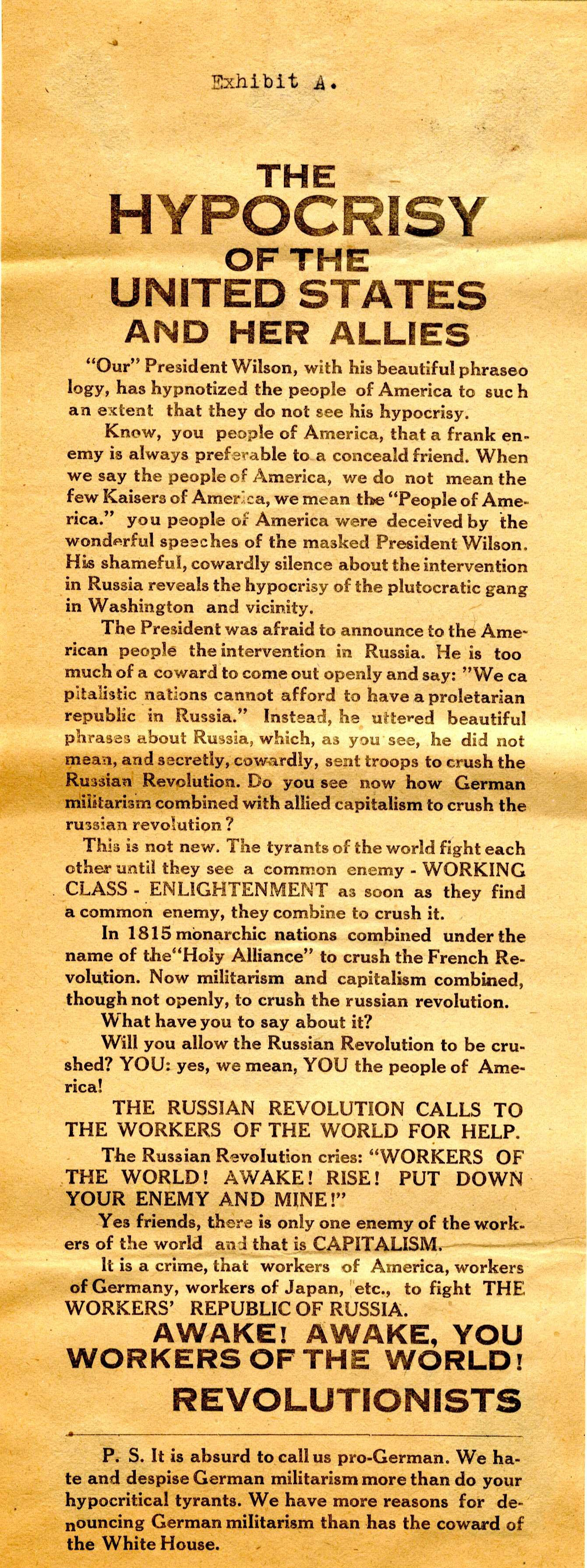
Leaflet: “The Hypocrisy of the United States and Her Allies”
National Archives Identifier: 40428833
Watching the transformation of Russia from an imperial empire to a Communist state from afar, the government of the United States was aghast. Furthermore, many in the business community were horrified at the idea that a huge country would now be run on Marxist principles, the categorical opposite of capitalism. They were also concerned that communist ideas would infiltrate the working class in the United States and energize the union movements, further complicating their efforts to keep unions from establishing a firm foothold among workers.
One of the reasons the West was so terrified of developments in Russia and Eastern Europe was that those countries were notorious for keeping information about what was going on within their borders from leaking. Consequently, the West frequently imagined that things were going much better for the Eastern Bloc than they actually were.
Another key player who kept the issue of Communism in the United States in the forefront of people’s attention was J. Edgar Hoover, who served as director of the Federal Bureau of Investigation (FBI) from May 10, 1924, until May 2, 1972. Hoover served eight presidents, four Republicans and four Democrats, and he was the mortal enemy of communists the world over. In the United States, he devoted the FBI’s resources to combatting the infiltration of communism into any and all aspects of American life, including the entertainment industry, trade unions and the Civil Rights Movement.
After the Russian Civil War ended in 1922, the Communist Party, led by Vladimir Lenin, set about reorganizing Russian society along Marxist lines, but Lenin only lived a few more years after the war ended. In the midst of a vicious power struggle with Joseph Stalin, Lenin died of a series of strokes in 1924. Stalin, a violent and brutal dictator, succeeded Lenin and ruled the country with an iron fist till his death in 1953. He transformed the country through a series of five-year plans from an agrarian economy into a military and industrial superpower, but he also killed millions who refused to conform to his policies. He sent people to penal colonies, had them executed summarily and instituted policies that resulted in millions starving to death. Estimates of the number of Russians who died at his hands range from six to 20 million.
Stalin remained in power throughout World War II, when Russia took control of the Eastern Bloc and divided Germany into West and East Germany and, specifically, into West and East Berlin. He established communist governments in the East European countries that Russia then controlled, and he supported North Korea in its invasion of South Korea in 1950. He also steered Russia into the nuclear club when it acquired a nuclear bomb in 1949.
Scenes of the Russian Revolution
(13 minutes 45 seconds, no sound)
National Archives Identifier: 23922
Erratic Weather

German Chancellor’s message to Kennedy re: the Bay of Pigs
National Archives Identifier: 193658
Following Joseph Stalin’s death in 1953, the U.S.-USSR relationship ran hot and cold. Not surprisingly, the temperature of the relationship depended largely on the personalities of the leaders of the two nations. The U.S. government felt obliged to keep communism at bay by various means, some successful and others less so.
When Fidel Castro seized control of Cuba in 1959, the U.S. government was alarmed by the prospect of having a communist government right on its doorstep. When John F. Kennedy became president in January 1961, he learned that his predecessor, Dwight D. Eisenhower, had planned an invasion of Cuba to overthrow Castro. Despite his misgivings, Kennedy went forward with the plan, which involved sending a cadre of Cuban exiles in on April 15, 1961, to assault the Cuban military at the Bay of Pigs on the southern shore of the island. The plan went sideways immediately, however, because the Cubans had learned about it beforehand and beat back the invasion as soon as it began. The whole enterprise was a stinging defeat and an embarrassment for the United States.
A year and a half later, the U.S. and the USSR got into a showdown when the latter started installing nuclear weapons in Cuba. Ultimately, the USSR backed down and removed the missiles, but not before Americans spent 13 tense days wondering if everything and everybody on Earth were about to be incinerated by global thermonuclear war.
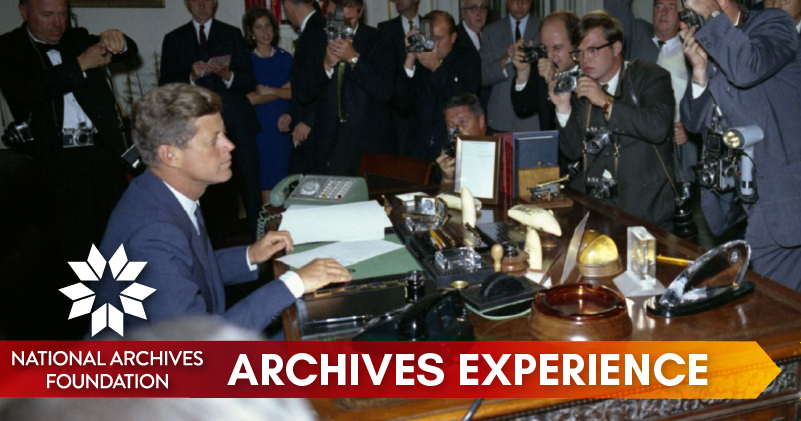
Read our 60th anniversary newsletter about the Cuban Missile Crisis here
Archives Experience Newsletter
October 11, 2022
However, tensions between the two nations eased a bit when they signed the Limited Test Ban Treaty in 1963, which outlawed testing nuclear weapons in the atmosphere, outer space or underwater, and the 1968 Nuclear Non-Proliferation Treaty. Then the war in Vietnam began and continued to escalate, and since the U.S. and the USSR were backing the opposite sides in the conflict, relations between them naturally became chillier.
But in 1972, after he had visited China that February, President Richard Nixon went to the Soviet Union and met with Soviet General Secretary Leonid Brezhnev. That meeting initiated a period that became known as “détente,” a French term that means “relaxation” and aptly describes the period that extended until 1979. Several important diplomatic milestones were achieved during this time, including the Strategic Arms Limitation Talks (SALT), which allowed each nation to build two missile defense sites and limited the number of intercontinental ballistic missiles (ICBMs) either side could possess.

Covert action against the Castro regime (including still-redacted material)
National Archives Identifier: 193239
When Ronald Reagan took office in 1980, he had a completely different attitude toward the Russians. He wasted no time in branding the USSR the “evil empire” in a speech to the British House of Commons in 1982. He objected to his predecessors’ more tolerant stance toward the USSR, claiming that it had encouraged the spread of communism to Third World countries and greater nuclear proliferation. Then on March 23, 1983, Reagan proposed the Strategic Defense Initiative (SDI), which would have launched space-based laser weapons designed to shoot down incoming nuclear weapons before they could reach their targets in the U.S. Senator Ted Kennedy scoffed at the proposal and nicknamed it “Star Wars,” a moniker that stuck. The U.S. spent $30 billion on the project before President Bill Clinton finally scrapped it in 1993, concluding it was technologically and financially unfeasible.
However, when the USSR collapsed in 1989, some thought that it was because Russia had tried to keep up with the United States by spending billions of dollars to outpace U.S. spending on the SDI. Other economists disagreed, pointing to the 10-year war the Soviets had fought in Afghanistan in addition to their massive defense spending as more likely causes.
Kennedy 1961 address to the UN about disarmament
Source: Kennedy Library
LBJ and Dean Rusk on a call about nuclear nonproliferation
National Archives Identifier: 205707224
Spring at Last
When the Berlin Wall fell in November 1989, it was truly fortuitous that George H. W. Bush was president of the United States. Unlike almost all the previous presidents of the United States, Bush had an extensive background in diplomacy. He had served as the U.S. Ambassador to the United Nations under President Nixon and the Second Chief of the U.S. Liaison Office to the People’s Republic of China and Director of the Central Intelligence Agency under President Gerald Ford. He was not about to go out with guns blazing—instead, he said only that he was “very pleased” when the East and West Germans tore the wall down.
Prior to these developments, Bush had cultivated a relationship with Soviet leader Mikhail Gorbachev, and a month after the wall fell, he flew to Malta to meet with Gorbachev to discuss reducing both countries’ nuclear arsenals. The next year, they met in Washington and signed an agreement to that effect, and in July 1991, they signed the Strategic Arms Reduction Treaty (START I). Bush hoped to keep the USSR intact, but despite his best efforts, the union collapsed on Christmas Day of 1991.
But one of the key achievements of Bush’s meeting with Gorbachev in Malta was his position on the reunification and political future of Germany. Immediately after the summit, Bush flew to NATO in Brussels, where he read a statement to the press that insisted that the German people must determine the future of a reunited German state, including which countries it would ally itself with.
Many western powers were opposed to the reunification of East and West Germany. But Bush committed himself to negotiating with Helmut Kohl, the German chancellor, and Gorbachev to ensure a smooth reunification of the two states throughout the process that extended from 1989 through 1990. His efforts brought forth a new and lively state on the international scene. When George H. W. Bush died on November 30, 2018, German Chancellor Angela Merkel, who was attending the G20 summit in Argentina, told reporters, “I mourn George Bush, the 41st president of the United States, as the chancellor of the German Federal Republic but also as a German who, without the results of his policies, would hardly be standing here.”

Moonshot
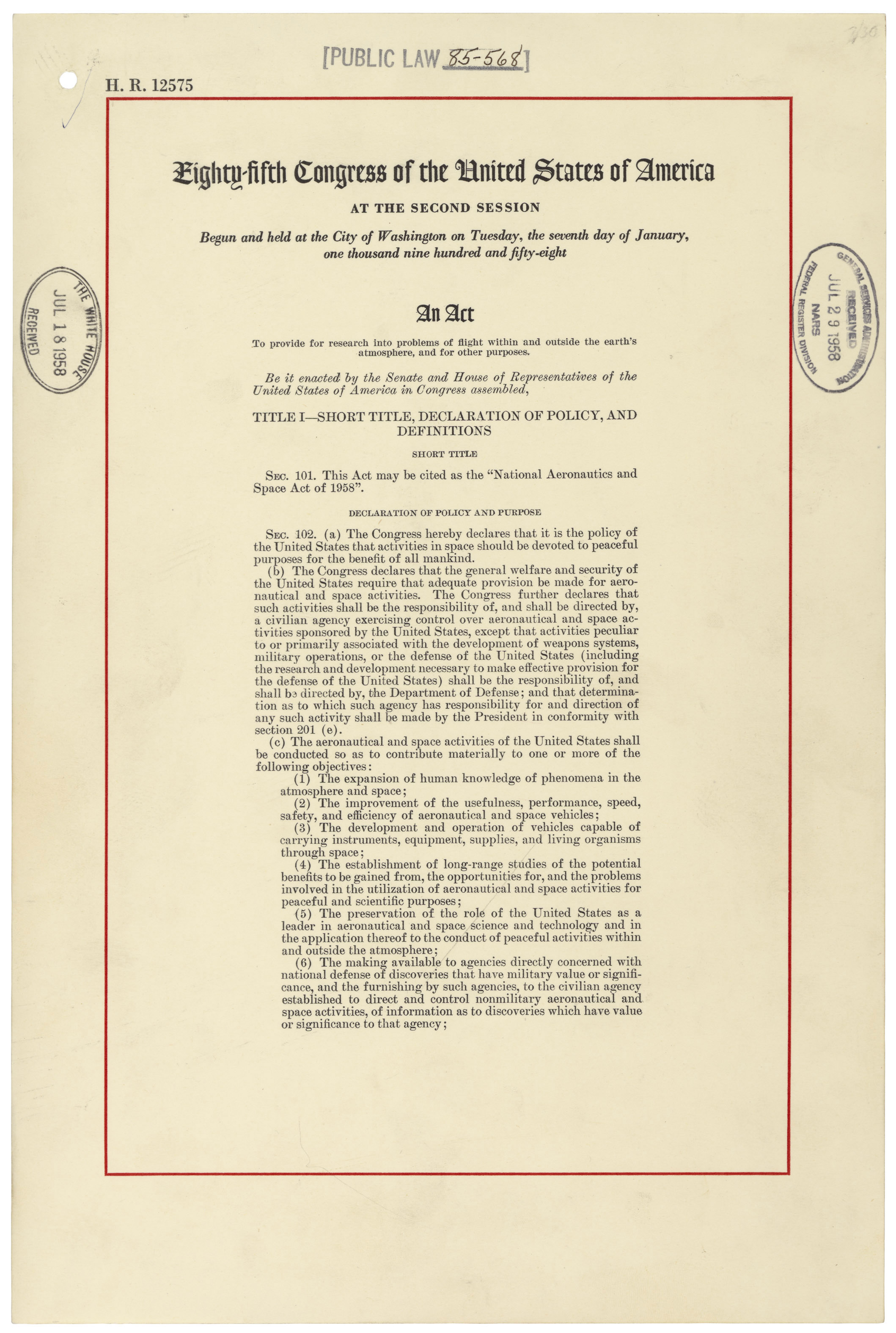
National Aeronautics and Space Act, 1958 (created NASA)
National Archives Identifier: 299868
One element of the Cold War between the USSR and the United States was the Space Race, which pitted the two countries in a competition to see which would control outer space. The U.S. announced in 1955, the International Geophysical Year, that it planned to launch artificial satellites into orbit around the Earth, but the Soviets got there first, sending Sputnik 1 into orbit on October 4, 1957. The USSR raised the stakes on April 12, 1961, when it sent Yuri Gagarin into orbit on Vostok 1.
It’s not an exaggeration to say these developments sent the U.S. government into a tizzy. Besides the issue of the Soviets besting the U.S. in a straight-up competition, their technological advancements stirred up fears about their military superiority. Six weeks after Gagarin’s flight, President John F. Kennedy asked Congress to commit to “landing a man on the Moon and returning him safely to the Earth” before the end of the decade.
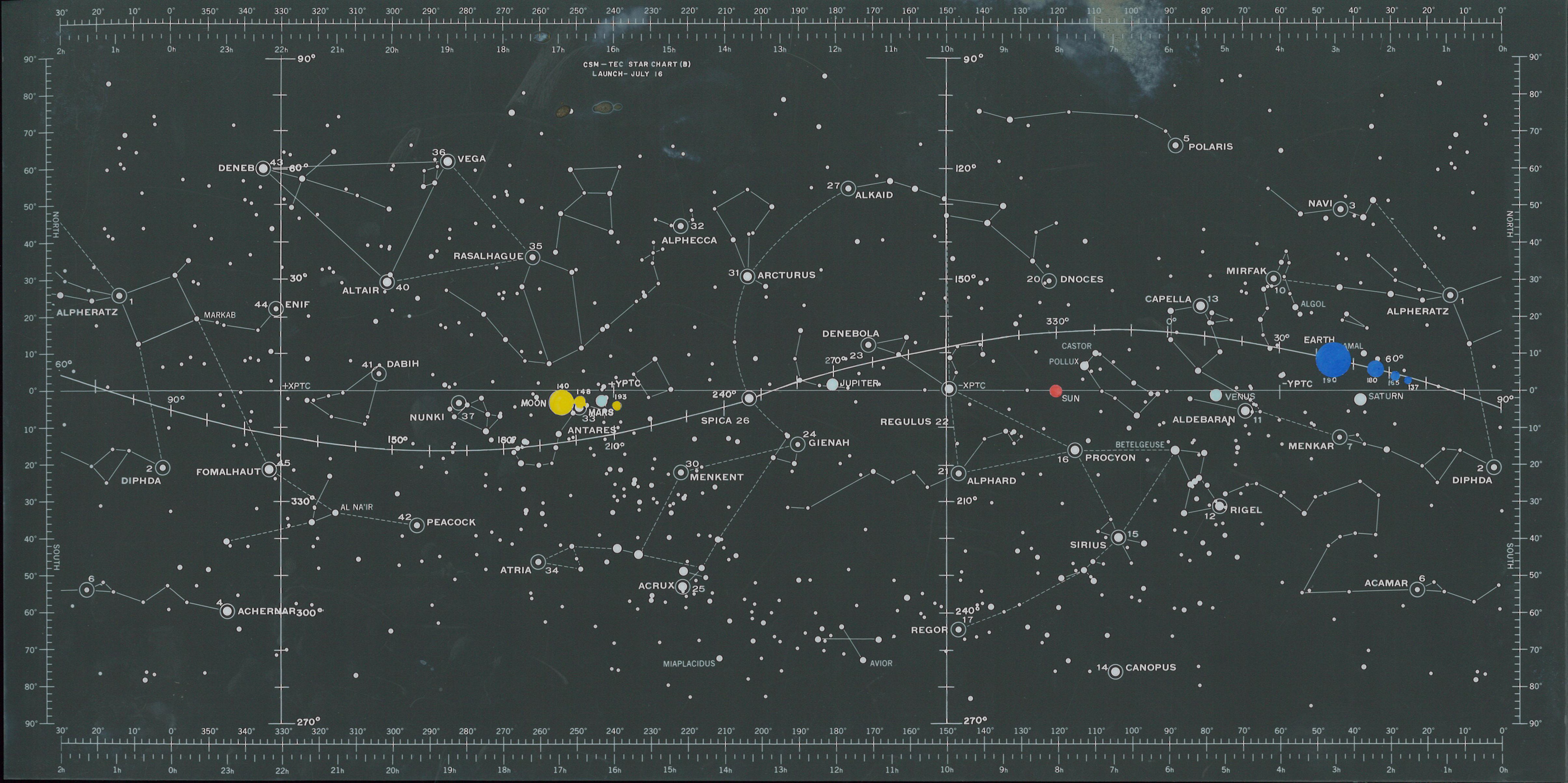
NARA’s interactive space age timeline
Source: Space Exploration – NASA Records at the National Archives
Then in the fall, on September 12, Kennedy gave a speech at Rice University in Houston, Texas, in which he reiterated his intentions for the U.S. to send a man to the Moon. This speech helped Kennedy make his case for the ambitious and expensive space program he was envisioning for the nation. ““We choose to go to the moon in this decade and do the other things, not because they are easy,” he told his audience, “but because they are hard.”
The U.S. space program was comprised of Project Mercury, which made 25 flights between 1961 and 1963; the Gemini Program, which concentrated on testing equipment, procedures and training for ground crews and astronauts; and the Apollo program, which landed a man on the moon on July 20, 1969, eight years, one month and 26 days after President Kennedy issued his challenge.
Kennedy’s Moonshot address
Source: Kennedy Library
Kitchen Table Issues

VP Richard Nixon cuts the ribbon officially opening the United States National Exhibition in Moscow
Source: NARA’s The Unwritten Record blog
The Kitchen Debate was a series of three conversations between U.S. Vice President Richard M. Nixon and the USSR’s Chairman of the Council of Ministers Nikita Khrushchev on July 24, 1959, when Nixon was guiding Khrushchev through the American National Exhibition at Sokolniki Park in Moscow. The year before, the U.S. and the USSR had agreed to a cultural exchange to encourage greater understanding between the two nations by sponsoring exhibitions in each other’s countries. The Soviets opened their exhibition in New York City in June 1959, and the U.S. exhibit opened in July of that year in Moscow.
The point of the U.S. exhibit was to showcase the technology that American companies were producing and the products and innovations that American consumers had access to. As Nixon was leading Khrushchev through the exhibit, the two men engaged in a series of conversations that reporters recorded on video cameras. The initial exchange began with Khruschev’s complaining about Congress’ Captive Nations Resolution, which stated that the Soviet Union held its Eastern European allies captive. Khruschev objected to that characterization. Khruschev then dismissed the technology on display in the exhibit, insisting that Soviet citizens would soon have access to all of it and even more advanced goods in the very near future.

Richard Nixon and Nikita Khrushchev debate at the American Exhibition in Moscow
National Archives Identifier: 16916096
The second conversation took place when the two leaders were viewing a television studio in the exhibit. They agreed that their visit would be translated into their respective languages and broadcast in their respective countries, and they shook hands on the deal.
The third conversation occurred in a model house with a cutaway kitchen, which showed what an American family could expect to afford for $14,000. Amenities included a range, a dishwasher and a refrigerator.
The American news networks broadcast the Kitchen Debate the next day. The Russians objected because Nixon and Khrushchev had agreed to simultaneous broadcasts in both countries, but the networks felt delaying would mean the news was stale. It was perhaps a lesson for the Russians in the fact that the U.S. government did not control the press.
One challenge that Khrushchev issued during the Kitchen Debate was his claim that Nixon’s grandchildren would live under communism and Nixon’s counterclaim that Khrushchev’s grandchildren would live in freedom. Nixon stated in 1992 that he was sure Khrushchev was wrong, but not sure he himself was correct. As it transpired, however, Khrushchev’s son Sergei Khrushchev became a naturalized American citizen after the collapse of the Soviet Union, and his children did indeed live free lives.
News coverage of the Kitchen Debate
(2 minutes)
National Archives Identifier: 48887

